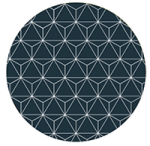The Open Call for the Social Art Award 2019 under the topic “We are the People – Peaceful Revolutions” was closed on December 15, 2019. We are very impressed by 558 submissions that were contributed by artists coming from 65 countries across all continents.
The winners of The Social Art Award 2019 are Narcissa Gold (USA), Melinda Mouzannar (Lebanon) and Bogna Grazyna Jaroslawski (Poland/Germany). The Honorary Mention goes to Kingson Kin Sing Chan (Hong Kong/UK).
Below you find the artworks, that passed the initial jury round. The public voting took place till 30 December and is a tool to give more public visibility to the topic and the artworks. It does not replace the final jury judgment. There were two wildcards for the most voted artworks that entered the final shortlist.
The focus diversity of applications shows that artists are active in the multi-faceted fields of socially engaged art reflecting on wars, genocides, femicides, traumata, violence against refugees, children, women, men, disabled people, LGBTIQs, animals. They share feelings for the planet and its living species, but also showing hopelessness due to complex crises be it climate change (e.g. in regard to water pollution), capitalism, corruption, a violation against human rights, nature, protected national parks. Many of the artists are constantly trying to give a voice to the poorest or empower unheard social groups.
It’s not only about peaceful revolutions, but it’s also about feeling a deep connection and showing love and respect for each other.
Thank you all for sharing your great and inspirational work and look at all the great contributions!
Disgrounded
Iren Yakovenko
open category
A year ago, when I got the invitation to work on a scientific problem in Israel, I knew almost nothing about the country. As I was very excited about the work, I didn't check much about the town where I was coming beforehand. I just boldly came to see. Here I found myself in a relatively small town called Ariel, located on the West Bank, considered by many an annexed Palestinian territory. The problem overwhelmed and disheartened me - the seemingly beautiful and peaceful town was surrounded by many levels of formidably-looking fences. I started to interview people around me and desperately bombarded Google with questions while thinking about leaving. After some months of research, the conflict appeared before me as it is - tough, messy and almost unsolvable. As I was thinking about it every day for some salvation, I started to take pictures of myself, the way I felt grounded here, and how anticipated other people might feel about it. Being a photographer, I saw it as my new project, the hardest project I ever had. I still don't know whether it can lead anywhere, but I plan to continue and try to exhibit the work around the country, or both countries, that painfully intersect and live in two different dimensions on the same ground - Israel, and Palestine. How can art catalyze change?: This project has basicaly resulted from my pain, and for me, it was a remedy itself. I believe that we all can catalyze change if we are open to ourselves and with each other. A few months ago, I saw the photo works of a Palestinian artist, Ruba Salameh, on the group exhibition "Tar and Milk" in Haifa, which impressed and further inspired me to do what I'm doing. To see the problems, we need to talk about them and to read them from as many perspectives as we can. The one work can never be a solution itself, but it's a start. Let's talk and let's see.
A year ago, when I got the invitation to work on a scientific problem in Israel, I knew almost nothing about the country. As I was very excited about the work, I didn't check much about the town where I was coming beforehand. I just boldly came to see. Here I found myself in a relatively small town called Ariel, located on the West Bank, considered by many an annexed Palestinian territory. The problem overwhelmed and disheartened me - the seemingly beautiful and peaceful town was surrounded by many levels of formidably-looking fences. I started to interview people around me and desperately bombarded Google with questions while thinking about leaving. After some months of research, the conflict appeared before me as it is - tough, messy and almost unsolvable. As I was thinking about it every day for some salvation, I started to take pictures of myself, the way I felt grounded here, and how anticipated other people might feel about it. Being a photographer, I saw it as my new project, the hardest project I ever had. I still don't know whether it can lead anywhere, but I plan to continue and try to exhibit the work around the country, or both countries, that painfully intersect and live in two different dimensions on the same ground - Israel, and Palestine. How can art catalyze change?: This project has basicaly resulted from my pain, and for me, it was a remedy itself. I believe that we all can catalyze change if we are open to ourselves and with each other. A few months ago, I saw the photo works of a Palestinian artist, Ruba Salameh, on the group exhibition "Tar and Milk" in Haifa, which impressed and further inspired me to do what I'm doing. To see the problems, we need to talk about them and to read them from as many perspectives as we can. The one work can never be a solution itself, but it's a start. Let's talk and let's see.



